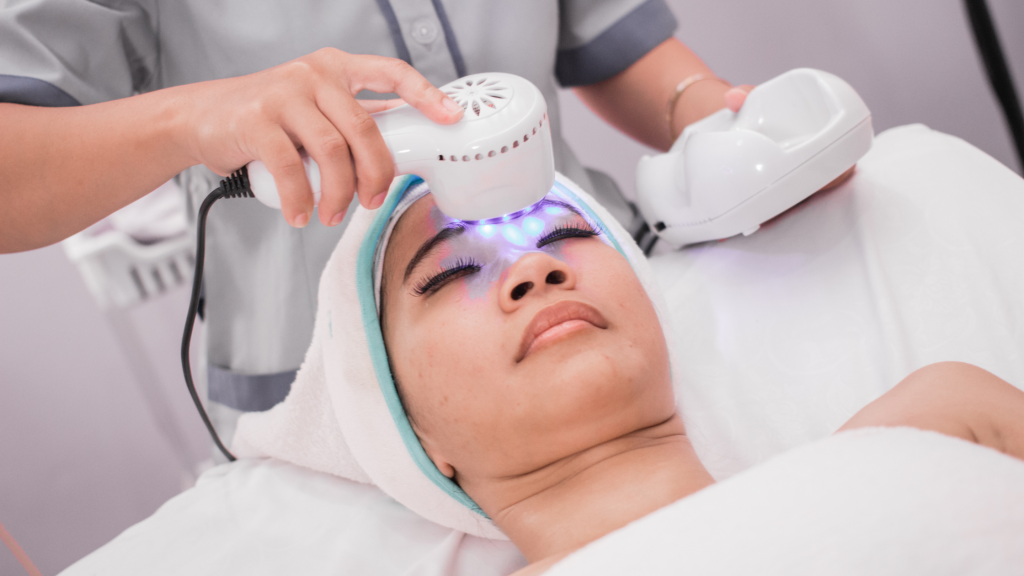



Ulthera Laser is an advanced technology used in non-surgical cosmetic procedures to achieve skin tightening and rejuvenation. By utilizing focused ultrasound energy, this innovative treatment stimulates collagen production, resulting in firmer and more youthful-looking skin. Let’s explore the benefits and effectiveness of Ulthera Laser in detail.
Exploring Ultherapy as a non-invasive approach to skin rejuvenation. Discussing the purpose of Ultherapy and how it differs from other laser treatments.
Highlighting the key advantages of Ultherapy, including its non-invasive nature and targeted results.
One of the remarkable aspects of Ulthera Laser technology is its scientific foundation. By understanding how Ulthera Laser works, we can appreciate its effectiveness in achieving skin tightening and rejuvenation.
Ulthera Laser operates by utilizing focused ultrasound energy to target specific layers of the skin. This energy penetrates deep into the tissue, reaching the foundational layers where collagen production occurs. By stimulating the production of new collagen, Ulthera Laser helps to improve the firmness and elasticity of the skin.
What sets Ulthera Laser apart is its precision and depth control capabilities. The device allows practitioners to precisely target the desired treatment areas, ensuring accurate delivery of energy while minimizing the impact on surrounding tissues. This level of control contributes to both the safety and effectiveness of the treatment.

In the realm of skin rejuvenation, Ultherapy and Fraxel are two prominent laser treatments that offer unique benefits. Let’s explore the similarities and differences between these techniques to help you make an informed decision.
Fraxel is another popular laser treatment that utilizes fractional laser technology. It works by creating microscopic columns of treated tissue, stimulating the body’s natural healing process and promoting collagen production. Fraxel is particularly effective for addressing concerns like fine lines, wrinkles, and sun damage.
On the other hand, Ultherapy, with its focused ultrasound energy, offers a different approach. While both treatments aim to improve skin appearance, Ultherapy primarily focuses on skin tightening and lifting. It is especially effective for addressing sagging skin on the face, neck, and décolletage.
The choice between Ultherapy and Fraxel depends on your specific concerns and treatment goals. If you are primarily seeking skin tightening and firmness, Ultherapy may be the preferred choice. However, if you are targeting texture irregularities, fine lines, or discoloration, Fraxel might be more suitable.
Understanding the distinctions between these two techniques will empower you to select the most appropriate treatment for your individual needs. It is always recommended to consult with a qualified professional who can assess your specific goals and recommend the best course of action.
One of the most frequently asked questions about Ultherapy treatment is how long the results will last. While the longevity of results can vary from person to person, several factors come into play. It’s important to understand these factors to have realistic expectations regarding the duration of the effects.
Age: Age plays a role in determining how long Ultherapy results may last. Generally, younger individuals with better skin elasticity tend to experience longer-lasting results compared to those with more advanced signs of aging.
Lifestyle: Lifestyle choices can influence the longevity of Ultherapy results. Factors such as smoking, excessive sun exposure, poor skincare habits, and an unhealthy diet can contribute to the breakdown of collagen and elastin, potentially impacting the duration of the treatment’s effects.
Skin Condition: The initial condition of your skin before undergoing Ultherapy can also affect the longevity of the results. Individuals with mild to moderate skin laxity typically achieve more noticeable and longer-lasting improvements compared to those with severe sagging or loose skin.
It’s essential to note that while Ultherapy offers long-lasting benefits, the natural aging process continues. Over time, new collagen production may gradually decline, and the skin may start to show signs of aging again. However, many individuals choose to undergo periodic maintenance treatments to prolong the results.
Ultherapy is a versatile treatment suitable for various age groups. While there is no specific “best” age for Ultherapy, different age ranges can benefit from the treatment in unique ways.
Younger Individuals: In their 30s and 40s, individuals may consider Ultherapy as a preventive measure. By stimulating collagen production and tightening the skin, Ultherapy can help delay the onset of visible signs of aging, providing a more youthful appearance.
Middle-Aged Individuals: Those in their 40s and 50s often seek Ultherapy to address mild to moderate skin laxity. The treatment can help lift and tighten sagging skin, particularly around the brows, jawline, and neck, restoring a more youthful contour.
Mature Individuals: Individuals in their 60s and beyond can still benefit from Ultherapy, although the results may vary. While the treatment may not completely reverse severe skin laxity, it can provide noticeable improvements, enhancing overall skin tone and firmness.
Ultherapy offers a non-invasive alternative for individuals seeking to rejuvenate their appearance without undergoing surgery. Consulting with a qualified professional is crucial to determine if Ultherapy is suitable for your specific needs and goals.

When considering any cosmetic procedure, it’s important to be aware of the potential risks and side effects. Here, we address the factors you should consider before undergoing Ulthera Laser treatments.
Provide information on the common side effects that may occur after Ultherapy.
Reassure readers that most side effects are temporary and resolve on their own.
Encourage individuals to consult their healthcare provider or the treating practitioner if they have any concerns about the side effects.
Book now for a transformative skincare experience!
In conclusion, Ulthera Laser treatments, particularly Ultherapy, can offer transformative results in terms of skin rejuvenation and tightening. However, it’s crucial to approach these procedures with awareness of potential risks and side effects.
The temporary nature of most side effects associated with Ultherapy. Ultimately, it is recommended that individuals interested in Ulthera Laser treatments consult with a qualified professional to assess their suitability for the procedure and to address any concerns they may have.